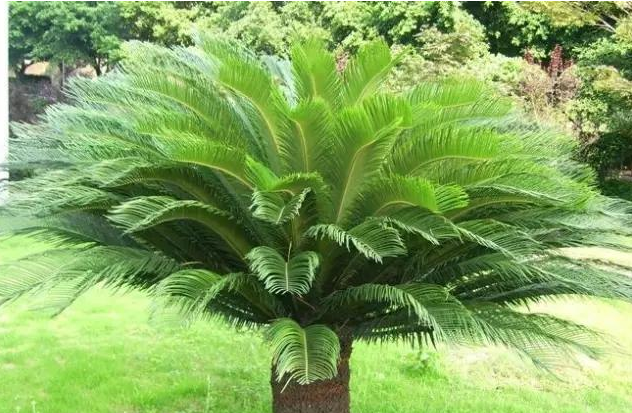Cultivation techniques of cooked Rehmannia glutinosa
Rehmannia glutinosa, also known as Rehmannia glutinosa, is a kind of traditional Chinese medicine of Xanthaceae. The main medicinal part of Radix Rehmanniae is the rhizome, which has the effect of nourishing yin and tonifying blood. There is a wide range of planting area in China and abroad, and the distribution range of cooked Rehmannia glutinosa is relatively large. now, with the increasing demand of cooked Rehmannia glutinosa, the planting area is also getting wider and wider. So how to cultivate Rehmannia glutinosa? The following editor brings you the cultivation techniques of cooked Rehmannia glutinosa. Let's have a look!

1. Land selection and preparation
Although Rehmannia glutinosa has strong growth ability, it can adapt to all kinds of soil quickly. But if artificial planting wants to increase yield, then first of all, it is necessary to choose sandy soil that is deep, soft, fertile and with normal drainage and irrigation. Then in the winter and spring before planting to do a good job of soil preparation, deep ploughing, its depth should be maintained about 30 centimeters. And in order to ensure that the soil is fertile enough, it is necessary to apply sufficient mature farm manure and appropriate amount of calcium superphosphate after soil preparation. Finally, it is leveled and fine raked, and the bed is prepared for planting.
2. Planting at the right time
The main propagation materials of Radix Rehmanniae are mainly rhizomes, and the mother stems are mainly plants planted in the first year. Cut off the head and tail of the mother stem, select the middle part as cultivation, remove the head and tail and then cut it into small segments of about 4-5 cm. 2-3 bud holes should be retained on each small section. After cutting, the incision is stained with plant ash to promote the wound healing. After it is slightly air-dried, it can be planted and ready to be planted. When planting, pay attention to the planting density, control the plant row spacing at about 28cm to 35cm, dig the planting hole, and put two small sections in each planting hole. Then cover a layer of ash and fine soil, strengthen management and wait for seedlings to emerge.
3. Water and fertilizer management
Rehmannia glutinosa has a great demand for nutrition, so we should apply sufficient base fertilizer before planting. In the process of planting, it is necessary to topdressing in time to meet the nutritional needs of Rehmannia glutinosa. The first topdressing work should be carried out after the seedlings, and the fertilizer is mainly calcium superphosphate in order to promote the growth of the rhizome. Then sprinkle an appropriate amount of plant ash between the rows when closing the row to promote the growth of the plant. Rehmannia glutinosa needs a lot of water in the early growth period, so we should often water it, but in the period of stem expansion, we should control watering to avoid too much water. And in the rainy season to do a good job of drainage, to prevent root rot, causing diseases and insect pests.
4. Field management
It is necessary to do a good job of interseedling work when the seedlings grow to about 11 centimeters, and the robust seedlings should be retained when the seedlings grow to about 11 centimeters, one for each seedling hole. If there is a lack of seedlings, then the same growth of healthy seedlings should be made up in time. The growth ability of Rehmannia glutinosa in seedling stage is weak, and the root distribution is relatively shallow, so it should not be too deep in the middle tillage to prevent damage to the root of Rehmannia glutinosa. Weeds around the seedlings should be pulled out by hand and should not be ploughed after the row is closed. Finally, the underground thin stems growing along the surface should be eradicated in time to avoid excessive nutrient consumption and affect the normal growth of Rehmannia glutinosa.
The above is a brief introduction of Rehmannia glutinosa cultivation techniques, although the cultivation of Rehmannia glutinosa is relatively simple, the management is relatively extensive. However, when planting, it is still necessary to do a good job in the prevention and control of diseases and insect pests to prevent diseases and insect pests from harming the growth of Rehmannia glutinosa and affect the planting efficiency. That's all for today's introduction. This article is for reference only. Thank you for your reading and support.
- Prev

Key points of field management of alisma orientalis
Key points of field management of alisma orientalis
- Next

Signs of blossom in the cultivation method of iron tree
When it comes to this iron tree, many people like it. It is full of vitality and is a symbol of good luck. What is the breeding method of iron tree? What is the sign of the iron tree blooming? The culture method of iron tree: cycad is suitable to grow in direct sunlight or bright scattered light, and it is better to be semi-shaded in summer.
Related
- Fuxing push coffee new agricultural production and marketing class: lack of small-scale processing plants
- Jujube rice field leisure farm deep ploughing Yilan for five years to create a space for organic food and play
- Nongyu Farm-A trial of organic papaya for brave women with advanced technology
- Four points for attention in the prevention and control of diseases and insect pests of edible fungi
- How to add nutrient solution to Edible Fungi
- Is there any good way to control edible fungus mites?
- Open Inoculation Technology of Edible Fungi
- Is there any clever way to use fertilizer for edible fungus in winter?
- What agents are used to kill the pathogens of edible fungi in the mushroom shed?
- Rapid drying of Edible Fungi

